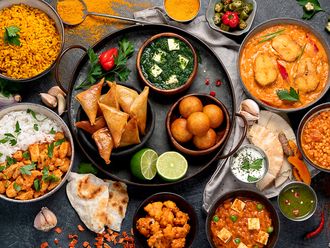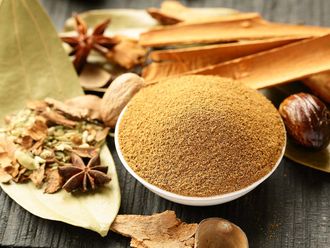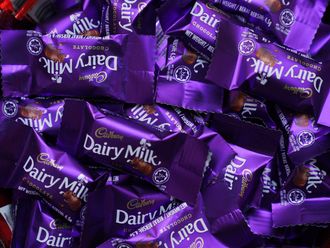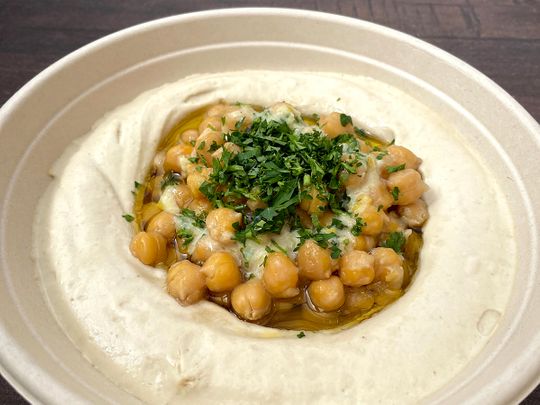
Independent researcher of Arab food culture Nawal Nasrallah opines that the first documented record for what we today call hummus – a combination of boiled and mashed chickpeas with tahini (sesame seed paste) can be found in medieval cookbooks from Syria and Egypt
A journey that began over 600 years ago
“The Egyptians called it hummus kassa, a name derived from a verb meaning ‘to pound something hard’,” she said. She believes that in the 14th century, it must have been a popular way of consuming the humble chickpeas in the eastern Mediterranean regions, including Egypt and the Levant, which covers today’s Palestine, Lebanon, and Syria.
Currently based in New Hampshire, Nawal is a native of Iraq and an independent scholar specializing in Middle Eastern cuisine. She has published books and articles on the history and culture of Arab food, including Delights from the Garden of Eden: A Cookbook and History of the Iraqi Cuisine, Dates: A Global History, and her English translations of medieval Arabic cookbooks were published by Brill.
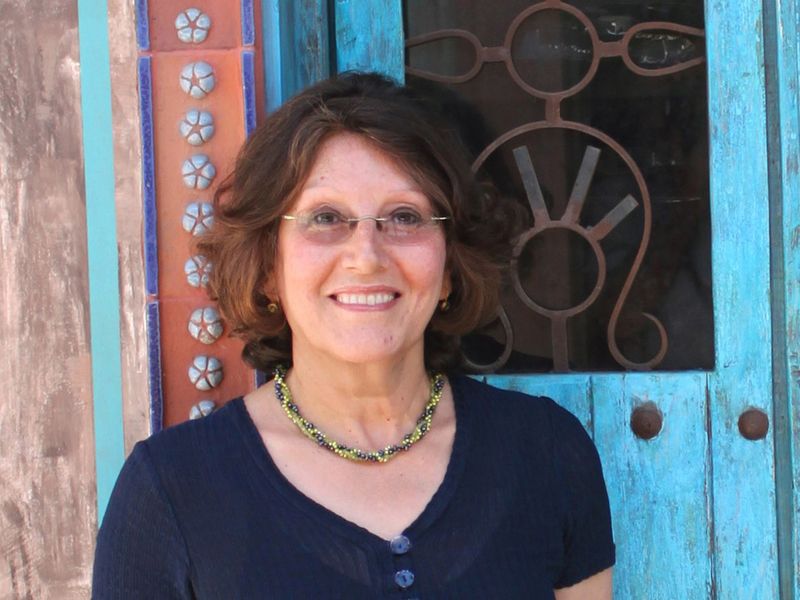
“With many hummus recipes featuring in cookbooks around the 14th century, we can safely assume that hummus would have existed long before that. In fact, the basic hummus ingredients, chickpeas, and sesame seeds have always been abundantly grown and used in the Near East region from ancient times,” said Nawal.
She added that the Egyptian recipes of hummus with their interesting variations, such as adding nuts, chopped lemons, and grinding herbs to give it a green colour, do represent an already advanced and refined stage in the making of this food. “Hummus making continued in the following centuries, and judging from the 19th century Lebanese cookbook titled Kitab Ustadh al-Tabbakhin (Book of a Master Chef), the recipe of hummus was much simplified and closer to how we prepare it today,” she said. Furthermore, Nawal believes that hummus was popularised in the 19th century as the era had more housewives and home staff across the world who devoted more time to household chores. “As a result, making hummus became common in Middle Eastern homes,” she said.
Reaching the shores of the US
“Hummus entered the United States because of the Arab/ Middle Eastern diaspora, mainly from the Levant, perhaps even as early as the beginning of the 20th century and even earlier. Hummus was of course made in their homes and served in Middle Eastern restaurants, but knowledge of it was limited to those interested in that cuisine in particular. But the popularity of hummus really picked up with the Israeli chefs in the US, who grew up on hummus and falafel in Israel….”
In fact, it’s become so popular in the US that she now believes there is very little difference in the quality and taste of US-made hummus and hummus from the Middle East. In fact, it’s now evolving in its own unique ways.
“Hummus is being played around a lot nowadays in the US,” she said. “People add beets, vegetables, chilies, lemons and other flavours to it.” Nevertheless, Nawal thinks the best hummus does not need any special “fixing” and is delicious as is.

“Hummus is being played around a lot nowadays in the US,” she said. “People add beets, vegetables, chilies, lemons and other flavours to it.”
“Hummus is hummus. It can be made anywhere and it should be smooth in texture with the flavour of lemon juice to be a little pronounced and not too overpowering. It doesn’t cost much to make either. Tahini is not too expensive, and chickpeas is one of the cheapest pulses available.”
But Ahmed Al Samadhi, head chef of Dubai Sauce, a Mediterranean restaurant in Los Angeles, says that while he tries to make the hummus as close as possible to the original, the ingredients he has to work with in the US can’t replicate the taste.
Which is why he firmly believes that the best way to make hummus in California is to import the right stuff. For example, he sources his tahini from Lebanon and Syria. He does admit that this drives up costs by quite a bit.
Locally sourced or imported, the taste of hummus is key
On the other hand, you have Jay (name changed upon request), who works at the Sunnyvale restaurant Falafel Stop. An Israeli immigrant, Jay claims to have learned to make hummus from an old Iraqi man 50 years ago. While he agrees with Ahmed on needing to import ingredients to make the best hummus, he doesn’t believe it’s as expensive as it is made out to be.
“I do not cut corners and do everything right,” he said. Jay uses organic chickpeas and imports all spices and tahini from the Middle East at Falafel Stop. “I use high-quality, pesticide-free ingredients and aim to give value to customers at a low price,” he said. For him, being in the restaurant business is “fun”.
“I don’t make much for sure, but I make enough to cover my costs. For me, providing fresh, good quality food is important.”
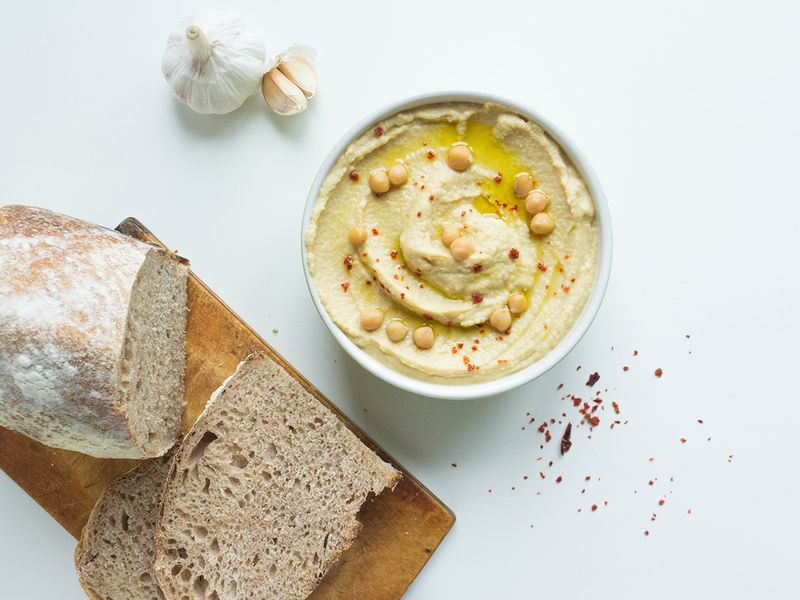
He believes that the best hummus is fresh, prepared daily and not processed. “Ever since I have been in the Mediterranean restaurant business, I have been making a fresh batch of hummus at my restaurant almost every 30 minutes,” he claims.
Dubai Sauce’s Ahmed believes that the taste of hummus made at home is way different than what you get at the restaurant. “It is far better when hummus is made at a restaurant as it has an even, creamy texture,” he said.
Ahmed said that the process of making hummus involves soaking garbanzo beans (chickpeas) in a mixture of water and a pinch of baking soda overnight or for 12 hours straight. “The baking soda helps the beans cook better.”
Then, the beans are washed thoroughly at least twice and cooked for three hours. The cooked beans are then left to cool overnight and finally ground to make hummus. It is to this hummus that a seasoning of tahini paste, fresh lemon juice, white pepper powder, cumin powder, garlic powder, and salt is added.
Nawal, though, believes that there is one simple and effective way to get hummus right. “If prepared the same way as we prepare in the Middle East, the taste of hummus will be the same, no matter where you are,” said Nawal.
From the home of tahini
The main ingredients include chickpeas, lemon juice, olives, and tahini. In the Middle East, tahini is made in two different ways. The first is to toast sesame to give it a nutty flavor and yield a tan color. The other method is not toasting the sesame, leaving a white color tahini and a slightly blander flavour than the former.
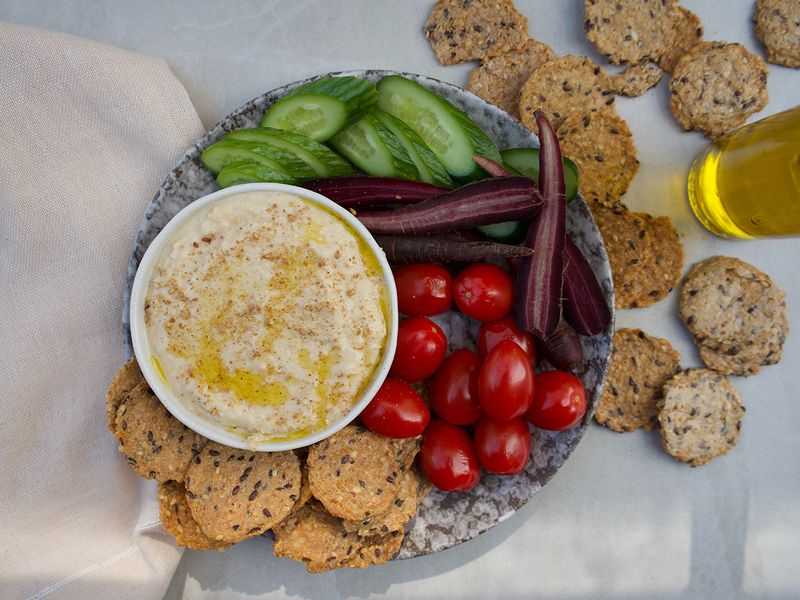
“I prefer the toasted sesame in my tahini,” said Nawal. She firmly believes that the use of fresh, good quality ingredients goes a long way in Arab food. “Using fresh lemons in lieu of preserved lemons is a small yet impactful step to make the hummus taste good,” she reckons.
Nawal does disagree with Ahmed in that she believes the best hummus is made at home. “It is far cheaper and tastier,” she said.
Her recipe for hummus calls for a balanced proportion of hummus and tahini. “The tahini should not be too much, otherwise the flavour of the chickpeas is lost.” For her, even the flavour of garlic is optional in hummus, believing that garlic intensifies when it is refrigerated and thus becomes pungent. “You don’t necessarily have to use garlic in hummus but if you want, it’s best to use very little.”
Nawal’s recipe for hummus comprises dried or canned chickpeas. For a smoother texture, she suggests using dried yellow split chickpeas. “Dried split peas will give a similar taste, and they do not need to be soaked overnight,” she said.
Nawal’s homemade hummus recipe:
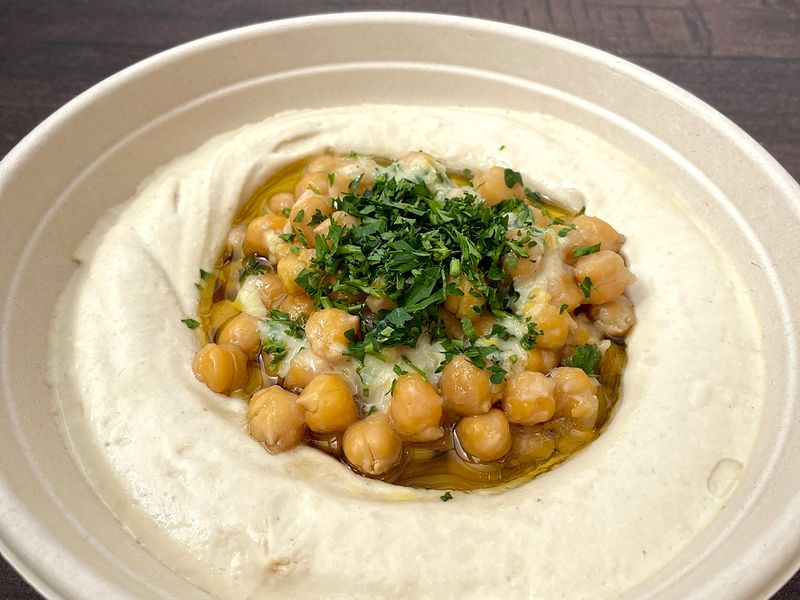
Ingredients:
1 ½ cups (12 oz) chickpeas, soaked overnight (will make about 3 cups mashed chickpeas); or two 15.5 oz cans of chickpeas, drained and washed
1 clove garlic, or to taste (grated)
1 tsp ground cumin (optional, but it will help with flatulence)
½ cup fresh lemon juice
1 tsp salt (less if using canned chickpeas)
2 tbsp olive oil
½ to ¾ cup tahini
For garnish: olive oil, olives, chopped parsley, chili powder, sliced tomato, 1 tablespoon whole cooked chickpeas (optional)
Method:
1. Boil the chickpeas until tender, and then drain them, but reserve some of the liquid.
2. Put cooled chickpeas or canned ones in a blender or food processor, and purée for a minute or two. If canned chickpeas look rather dry, add about ¼ cup water. Then add garlic, cumin if used, lemon juice, salt, and olive oil. Add tahini, and blend for a minute or two until mixture looks smooth, lighter in colour, and of spreading consistency. If it looks rather dry, add a small amount of the reserved liquid or just plain cold water. Check for salt and lemon juice. Refrigerate at least one hour before serving.
Remedies for not so perfect hummus
*If it is a little thick and heavy in texture, add some cold water or reserved chickpeas liquid, and adjust seasoning.
*If the consistency is good but it still needs more tartness, use a little bit of unsweetened lemonade powder.
*If the taste of chickpeas still overpowers, add a little more tahini, until you get a balanced taste.
If prepared without garlic, homemade hummus lasts for 4 days. Nawal does point out that while hummus is used mainly as a dip in the US, originally it was always served in small plates and is ideal for a light lunch comprising of a piece of pita and olives. She also suggests that if you prefer to use it as a dip, you can even scoop hummus with romaine lettuce instead of pita bread.
Changing the way hummus is eaten in the US
Din Leib and Isaac Yosef, co-owners of the downtown San Francisco Israeli restaurant Hummus Bodega, wanted to change the way hummus was eaten in America. The restaurant was rated as one of the best places for hummus in California on Google Reviews.
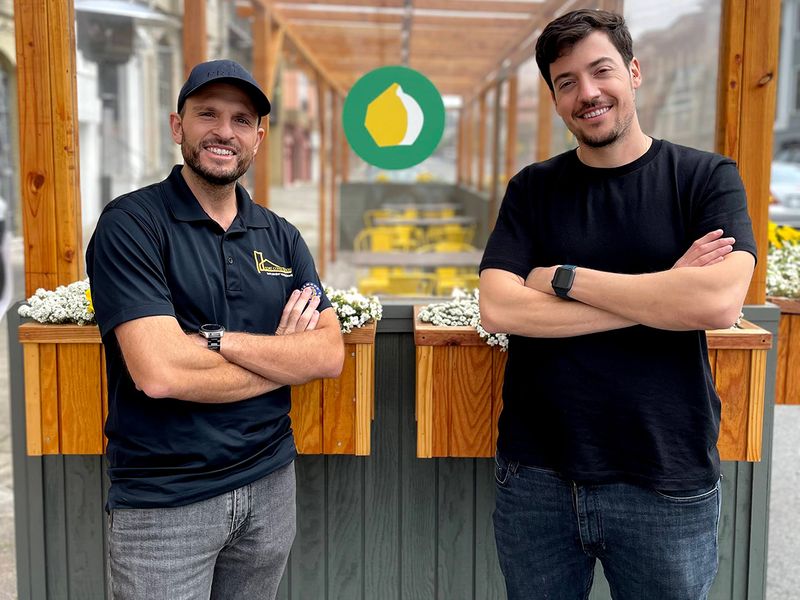
“Americans for the longest time considered hummus to be a dip like salsa or guacamole. However, for us Middle Eastern folks, hummus is a staple and main dish in our cuisine,” said Din, who has been in the US for the past five years. Isaac, who has been in the US for over 14 years, considers Middle Eastern food to be a combination of various dishes that is best eaten together.
“Middle Eastern food is a team of six to seven different kinds of flavours including chickpeas, tahini, 2-3 dips, pickles, olives, and olive oil seasoning,” he said.
Din and Isaac realised that Americans don’t eat hummus fresh and mostly resort to packaged items available in supermarkets. Like many hummus connoisseurs, they believe it is best eaten fresh and warm. In order to promote Middle Eastern cuisine and foster the appreciation of Americans for their food, Din and Isaac set up their restaurant and developed a menu with simplified names and added descriptions of the dishes. “We stuck to the same recipes without toning down any flavours or compromising on the taste,” said Isaac.
Din also observed that pita is not a great preference for Americans. “Israeli and other Middle Eastern customers always want more than one pita but, the local American customers are always satisfied with one pita on their plate,” said Din.
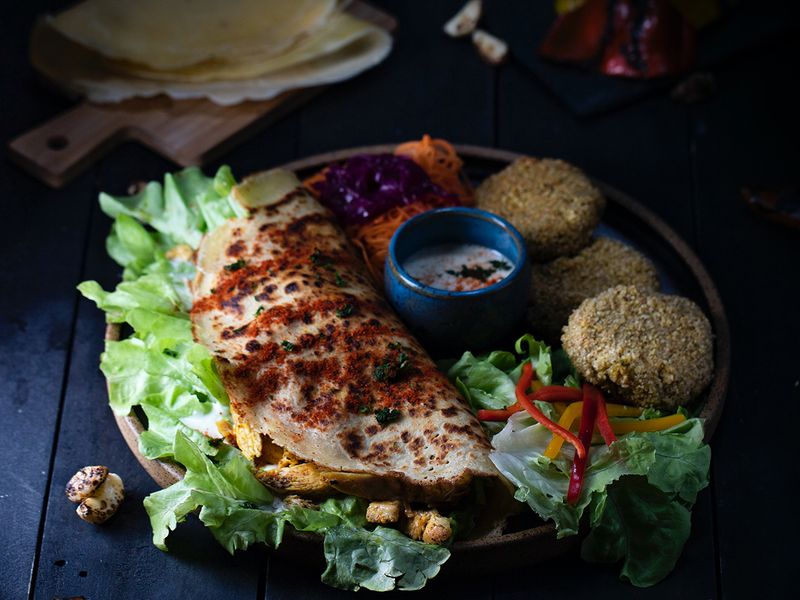
He also has noticed that, in the past three to five years, there was a surge in demand for plant-based and vegan food within the country, which in turn has given a significant boost to hummus’ popularity.
“Hummus is currently trending and has become a widely available dish in the US. The 1990s was the era of bagels, the 2000s was the era of Mexican food, sushi was the most popular dish in the late 2000s and hummus joined the bandwagon within the last five years,” said Din. Isaac observes that it has become more of a worker’s breakfast in the past couple of years too. “Scientifically, hummus has more protein than meat or beef, so it has become common for a lot of people doing manual labour to grab a box of hummus and pita for breakfast.”
Even after the duo set up their restaurant at the beginning of the pandemic, their restaurant business did not take a hit. “We owe our success to the freshness and high quality of ingredients. That is why our restaurant sales did not fall,” said Din. Vegetables are procured locally while olives and pickles, which are very specific to Middle Eastern food, are imported.
Hummus Bodega makes fresh hummus, which only lasts for 3 days. “As opposed to store-bought hummus that lasts for 2 weeks, our hummus is required to be stored cold and consumed within a couple of days of making,” said Isaac.
Shawarma, falafel and hamburgers…
Power couple, Nadiah Mshasha and Emad Ibrahim jointly started Dishdash, a Middle Eastern restaurant in 2001 in northern California.
Nadiah believes the landscape of Middle Eastern food took off in the US over the last five years. She drew a comparison from her earlier years of starting the restaurant wherein only people from the Middle East or Mediterranean region came but now, she sees American people talk about shawarmas and falafels like they talk about hamburgers.
Nadiah believes that a lot of credit for the popularity of Middle Eastern food in the US goes to Silicon Valley. “The diversity in the Valley with regards to various ethnicities drew a lot of interest and attention towards Middle Eastern food,” she said.
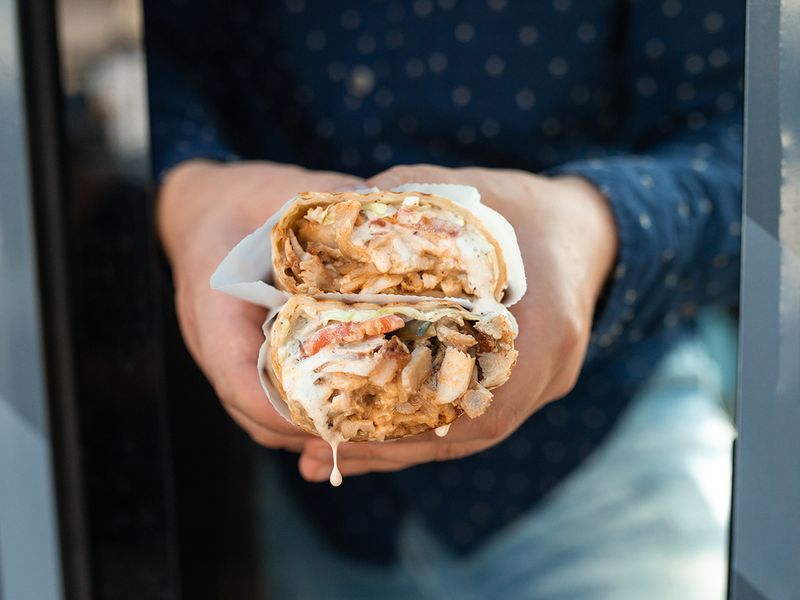
Having grown up in the Bay Area, Nadiah said that there were a few food trucks but no full-service Middle Eastern restaurant in her proximity until the 1990s. Her husband, Emad who moved to the US in 1988 was working at a restaurant and used to call his mother to ask her how to make the likes of falafels and hummus. Furthermore, Emad’s childhood days of eating at Abu Shukri, his favourite hummus spot in Jerusalem fueled his desire to start a place of his own that served hummus in the US. “We strive as much as possible to recreate the same flavour of Abu Shukri at our restaurant but, it is hard to replicate a nostalgic taste,” Nadiah said.
Nadiah’s Palestinian mother-in-law’s recipe for hummus is a family recipe passed down from her mother, and the same is used to make hummus at Dishdash restaurants.
“The hummus we make is made from scratch, and with love,” said Nadiah. She locally sources her garbanzo beans (chickpeas) and soaks the hard beans for a couple of days before cooking it. Tahini and fresh herbs are also locally sourced from within California. “We use whatever we get locally and take certain steps in the making that sets our hummus apart from others,” she said.
Nadiah opines that in the US, it is common to hear the names of the cuisines, ‘Mediterranean’ and ‘Middle Eastern’ used interchangeably. “Mediterranean food can even be pasta so to avoid confusion since the inception of Dishdash, we have stuck to calling it a Middle Eastern restaurant,” she said.
With over 22 Arab countries, Nadiah said that there is more than enough to offer in the Middle Eastern menu for everybody. “At Dishdash, we serve a biryani with raisins that is slightly more on the sweeter side. This appeals to Middle Eastern people from the north African parts. On the other hand, we have incorporated traditional kebabs that are very popular in Middle Eastern and Mediterranean food.
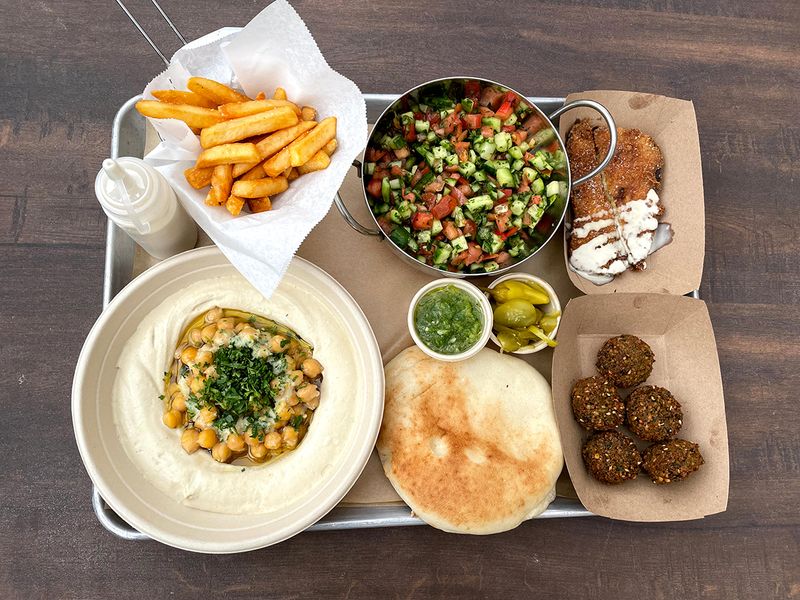
“Lots of people from all over the world are eating Middle Eastern food. The food caters to the taste buds of all ethnicities,” Nadiah observed. “There is a lot of vegetarian options in Middle Eastern food, which is preferred by certain ethnicities in the Valley, lamb is there for the meat-lovers and, there is traditional cuisines for Middle Eastern people.”
California-izing a cuisine
Nadiah noted that there is a lot of ‘California-izing’ of Middle Eastern cuisine. Mansaf, a traditional Palestinian and Jordanian dish comprising of rice, yogurt, and lamb is mostly eaten at weddings and other celebrations that call for a large gathering.
“At Dishdash, we ‘California-ed’ the dish and made it an entrée in the menu, thereby abridging the dish,” she said.
Nadiah said she is extremely proud that specific Middle Eastern dishes such as falafels, hummus, shawarma, baba ghanoush, and baklava have entered mainstream ‘American’ diets. “Mexican, Chinese and Japanese cuisines won over American taste buds a few years ago, and it is nice to see traditional Middle Eastern food enter the club now,” she said. “Earlier, carrots were dipped in ranch while today, they are dipped in hummus.”
While Din believes that the best hummus is smooth, soft, light, and carries a traditional taste, Nadiah likes her hummus to be zesty with a nice, lemony zing to it. She says adding a little bit of garlic and cumin enhances the taste. “If you want it to be creamy, you can add more tahini to the hummus,” said Nadiah.
Commercialisation of hummus
She further pointed out that earlier, there was no ready-made hummus available in supermarket stores in the US such as Trader Joe’s or Safeway but now, there are over 10 to 15 brands of hummus alone. In a capitalistic world where there are several companies manufacturing hummus, Nadiah believes that there is intense competition in the packaged food industry to preserve quality, freshness, and taste for weeks.
“Therefore, there are more added preservatives in packaged hummus, which does not meet up with the standard of hummus in the Middle East,” she said. Nadiah also stated that California has a high volume of health-conscious people. “Consumers are now aware that buying food items from supermarkets that last for weeks in a refrigerator could mean something fishy to their health,” she said.
To Din and Isaac, another feature about pre-packaged hummus that disappointed them was the availability of various combinations of hummus such as roasted garlic hummus, lemon hummus and chili hummus. “Hummus has to be done the traditional way. If you need an extra flavour of chili or garlic, it has got to be a topping and cannot be blended in with the hummus itself,” said Isaac.
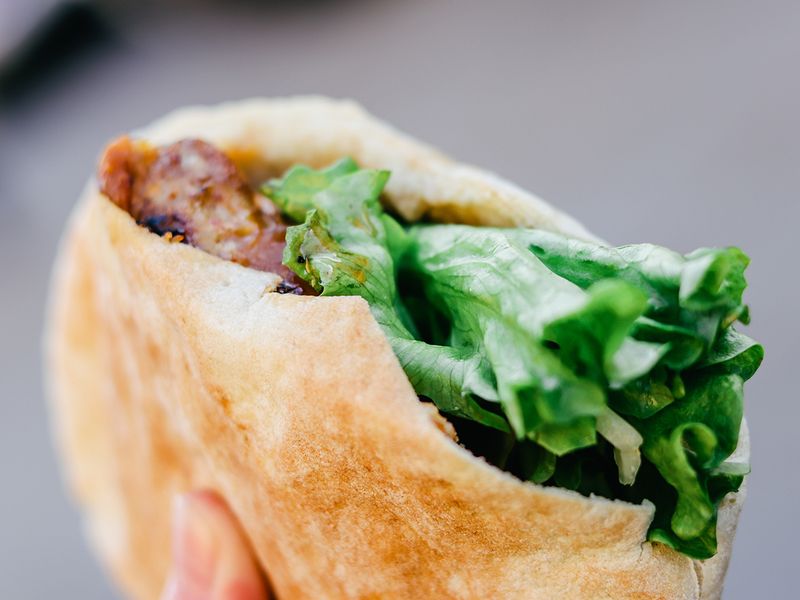
Nadiah observes that hummus is mostly store-bought only when it is needed for a quick party, otherwise most people prefer fresh hummus that is made every day. Both in the Middle East and the US, Nadiah claims that hummus has always been an appetiser and never a full meal. “Over the last few years, it has become a staple breakfast or brunch option in the US but never meant to constitute a whole meal,” she said.
Peanut-butter-jam sandwich or hummus, anyone?
Food researcher, Nawal told Gulf News that much like a PBJ (peanut-butter-jam) sandwich, hummus tends to quickly satisfy hunger and yet be nourishing. “Americans always are trying to make hummus interesting through colours and other variations,” she said. Minimal effort and preparation time are also another important factor that contributes to the popularity of hummus in the US. “The convenience and easy availability of hummus everywhere makes it a favourite for many. Besides that, Mediterranean food is healthy and tastes good.”
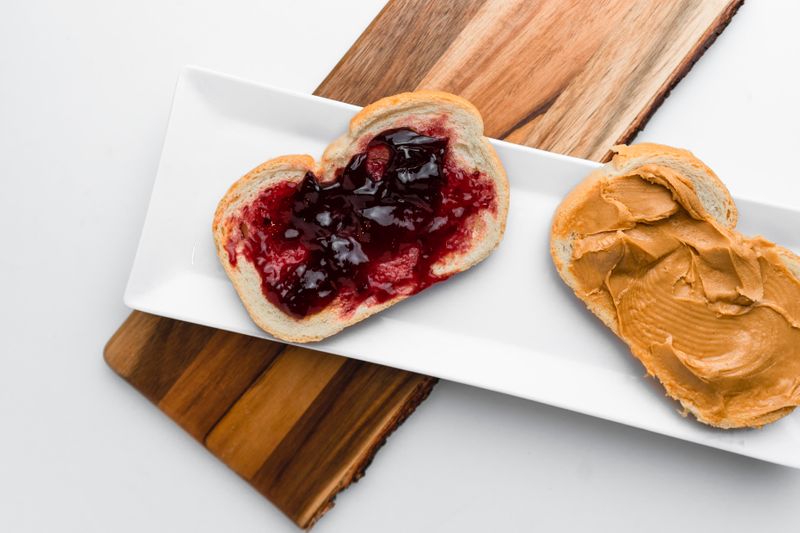
The myth of meat
She did mention a common misconception amongst Americans that a lot of Middle Eastern people are meat eaters. “Not a lot of dishes from the Middle East have meat,” she said. Nawal reckons that if someone had to abstain from eating meat, they can follow the Middle Eastern diet. “Christians in the Middle East do not eat meat during Lent period. Hummus, pita, and vegetarian dolma is their go-to food options at this time.”
It is quite remarkable to note how popular hummus became in California. Was it because of the large Middle Eastern population there or the increasing awareness for plant-based foods and veganism? While we reflect over this, we can grab a can of chickpeas and make some delicious homemade hummus or since we are here in the Middle East, let’s just grab a tub of freshly made hummus from a local Middle Eastern café nearby.
- The writer is a former Dubai expat, who has relocated to California



